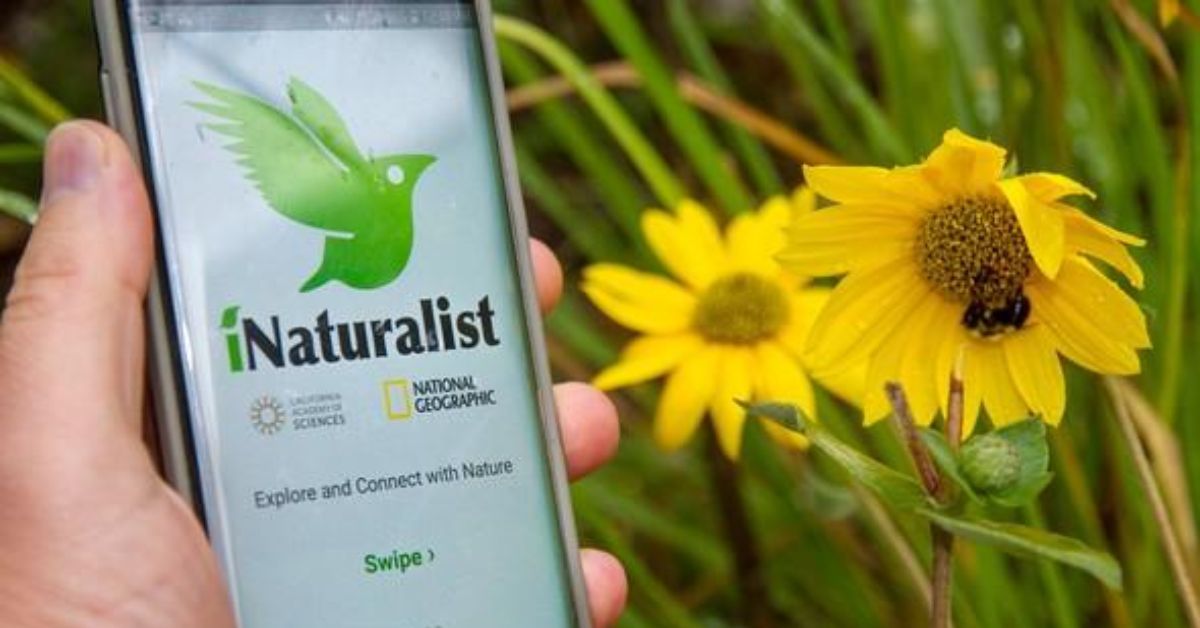Feature image courtesy: Shutterstock
If your child can swipe before they can spell and name YouTubers faster than trees, it might be time for a new kind of adventure.
Picture this: instead of farming pixels or chasing Pokemon, they’re spotting butterflies, recording bird calls, and learning why fireflies glow.
Since screens are here to stay, why not turn them into windows to the wild?
These five apps turn screen time into green time — helping kids explore nature, observe wildlife, and connect with the world beyond WiFi.
1. iNaturalist

Created by: California Academy of Sciences and National Geographic
iNaturalist is like a digital diary for everything green, crawly, furry, or feathered. The app allows kids (with a parent’s supervision) to photograph plants, insects, animals or fungi they spot outdoors.
It uses image recognition and global community input to identify species and log them for biodiversity research.
Every sighting contributes to real-world science, meaning your child’s garden snail photo might help a scientist track invasive species! It’s a wonderful way to get curious minds into conservation, all while turning walks into mini nature safaris.
What they’ll learn: Species identification, biodiversity, ecological responsibility and the thrill of contributing to citizen science.
2. Bird Count India
Created by: Nature Conservation Foundation in collaboration with eBird (Cornell Lab of Ornithology)
Perfect for budding ornithologists, Bird Count India integrates with the global eBird database and encourages users to log birds they spot around them, whether it’s a house crow or a rare winter migratory species.
Kids can upload their checklists and even participate in events like the Great Backyard Bird Count or Campus Bird Count. The interface is easy, the community is welcoming, and the sheer thrill of recognising a new bird and noting it down is surprisingly addictive.
What they’ll learn: Patience, observational skills, bird behaviour, migratory patterns, and how to maintain digital field notes.
3. WWF Amazing Planet
Created by: WWF India

If your child prefers flashy visuals and interactive stories, WWF’s Amazing Planet app makes wildlife education fun and engaging. It offers colourful lessons about animals, habitats, and environmental challenges through games, quizzes and digital badges.
From learning how tigers camouflage to understanding pollution’s impact on marine life, this app keeps it simple but impactful. It’s ideal for kids aged six to 12 and is a great way to introduce environmental concepts without sounding like a lecture.
What they’ll learn: Animal facts, ecological threats, and how they can be everyday environmental champions.
4. Seek by iNaturalist
Created by: California Academy of Sciences
If your child loves collectibles, Seek turns nature walks into a gamified treasure hunt. Unlike the main iNaturalist app, Seek doesn’t require accounts or community interaction, making it more child-safe and beginner-friendly.
Using your phone’s camera, it identifies plants, animals and fungi in real time. Kids earn badges for observing new species or completing challenges, making it feel like an interactive science quest. No internet? No problem. Seek works offline too!
What they’ll learn: Visual identification, habitat diversity, responsible tech usage outdoors and the excitement of eco-gaming.
5. Pl@ntNet
Created by: Four French research organisations (Cirad, INRAE, Inria, and IRD)

Is that a neem tree or a gulmohar? Instead of guessing, your child can snap a leaf and ask Pl@ntNet. This app is a botanical identifier powered by a massive visual database and artificial intelligence.
Kids can learn how to spot the difference between plant species, track seasonal blooms or even understand which species are endangered. It’s also a helpful companion for school projects and nature trail notebooks.
What they’ll learn: Botany basics, plant taxonomy, native vs exotic flora, and the value of green spaces in urban life.
Let them roam with a phone and purpose
In a world where squirrels are more common on sticker packs than in trees, these apps are doing the vital job of bridging the gap between technology and nature. They don’t just ease screen guilt — they turn screens into gateways for discovery.
Whether it’s identifying birds, photographing fungi, or learning why mangroves matter, children begin to care — not because they’re told to, but because they’ve experienced the wild for themselves.
And who knows? That bird-watching session might just spark the next Salim Ali or Jane Goodall.
No comments:
Post a Comment